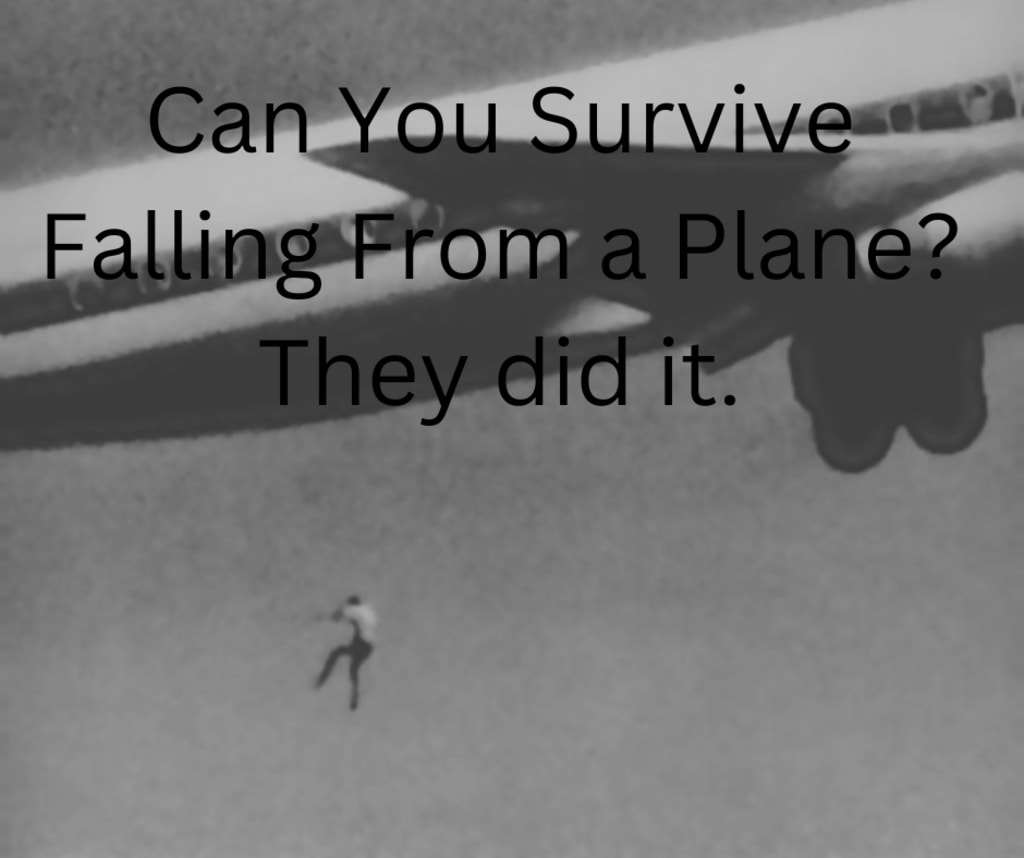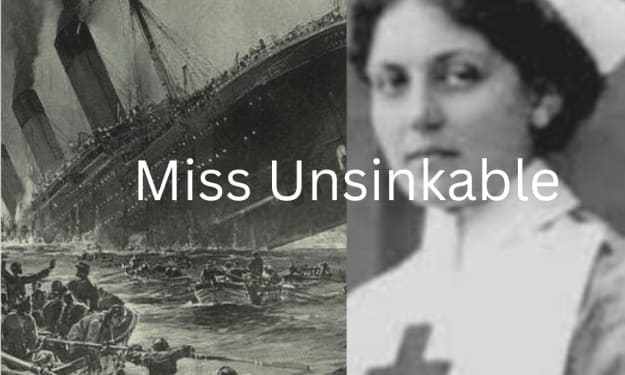
it's 1944. This is Josef Herman, and he's up at 18 000 feet without a parachute. Just a few seconds ago, he was piloting an airplane on a mission to Germany. Normally, pilots and crew wear parachutes inside the plane, but Josef wanted to be comfortable, so he removed the heavy parachute backpack.
When his plane was hit, he ordered all crew members to evacuate and ran for his parachute, but seconds later the plane exploded, throwing Joseph out of the plane, and he found himself hurtling around the night sky without a parachute. In a panic, he began to stare at the ground, looking for a safe place to land, but a river, lake, or swimming pool wasn't an option.
Hitting water at high speeds is almost identical to hitting concrete. Snow drifts are ideal if he can find one deep enough to provide at least a semi-soft landing.
But it's November, and there's no snow everywhere. The best alternative is to head for the woods, where tree limbs and vegetation might delay his fall long enough for him to avoid hitting the ground. These ideas took Joseph some time.
He was only six thousand feet up when he smashed into something and grabbed onto it out of reflex. At first, he thought it was a random piece of the plane falling to earth but no, it was someone's legs it turned out to be a member of his crew who had just opened his parachute, holding on to his new best friend for life, Joseph, who had almost reached the ground
Both officers were prepared for impact, but the parachute was only designed for one person with double the weight, so it couldn't drop at a safe speed. Despite receiving a massive hit to the chest from his parachute partner, Joseph still managed to stick the landing. He suffered several injuries, but he survived a fall from 18 thousand feet, which isn't even the record for a free fall without a parachute.
Meet Vesna Volovich She was a trainee flight attendant about fifty years ago and was serving passengers in the cabin like most days when the plane just broke apart. Vesna survived the initial chaos and began her free fall. She immediately lost consciousness and had no memory of what she was doing as she sped towards the earth. A few minutes later, she touched down, well, smashed down, and she survived. a local forester found her among the trees
She was severely injured, but after 16 months, she fully recovered and even wanted to return to her job as a flight attendant. She had no memory of the crash or the fall, so perhaps she was saved by the trees in the snow, and a huge thank you goes to the hero forest ranger who found her and provided her with life-saving first aid in one of those classic coincidences.
Vesna wasn't even intended to be on the plane in the first place because the airline made a mistake and put our survivor on the flight instead of another girl with the same name. Many people believe that the universe realized its error and granted the girl a second chance.
This is Luke Akins, and he completed one of the most insane free leaps ever with no parachute, so we're at 25, 000 feet. Four individuals leap out of a plane, but only three of them have a parachute; the poor person without a chute is our hero; the rest are the crew; they film Luke's drop and assist him in staying in the right direction; and they have smoke flares connected to their feet so Luke can see them through the clouds.
Now that we're at 17000 feet, Luke's speed is 150 miles per hour, and his pulse is nearly three times his resting heart rate. About halfway through, a crew member assists Luke in removing his oxygen mask. The higher the altitude, the less oxygen there is, so when Luke left the plane, he needed a mask to keep him from passing out, but now our hero is breathing on his own again.
He approaches the landing site, which is a giant net the size of about an eighth of a soccer field stretched between four large cranes, each with special spotlights to help Luke find the perfect landing spot on a net suspended 20 stories above the ground. Luke's right over his target and just before landing, he flips over onto his back to land safely Three, two, one touchdown, land down, whatever you call it, the crowd goes wild and Luke gets some serious applause
Luke Akins had already skydived 18,000 times before attempting this stunt, which takes nearly two years of training and practice.
times previously, therefore, a free fall lasts 2.5 minutes on average.
So Luke has spent 31 days in free fall, how about jumping from a freezing cold 128 000 feet this thing is called a high altitude balloon it's used to fly higher than seven miles up after about two hours this thing took future record holder Felix Baumgartner into the stratosphere to jump from that high he needed a special spacesuit with an oxygen reserve and additional heating to jump from that high he needed a special spacesuit with an oxygen reserve and additional heating.
When the hatch opened, Felix needed another 15 minutes to gather his thoughts before taking a simple step and taking off. After 20 seconds, he had achieved a staggering 435 miles per hour, and 30 seconds later, he had reached his maximum speed of 843 miles per hour. Felix went faster than many supersonic planes and even breached the sound barrier on the ground, and a large number of people experienced a supersonic boom similar to the one you hear.
After about his body was experiencing more g-force than astronauts taking off in a space shuttle. If he had completely lost consciousness the jump would have ended way differently but after 13 seconds the spinning stopped and he managed to stabilize
After three and a half minutes, he began to slow down. As you get closer to the surface, the air thickens, and you fall slower. four minutes and sixteen seconds in free fall
Felix released his parachute too soon; the problem was that his visor began to fog up due to some heating issues, so he didn't know exactly how high he was; just to be safe, he released his parachute too soon; he said he felt like he was floating in the water, not knowing which way was up. He finally touched down on solid ground nine minutes later.
He had just set several worlds records for the highest jump and greatest distance and speed of free fall plus he was the only person to break the sound barrier without using an engine but his highest jump record was soon broken Alan Eustis jumped from nearly 136 000 feet so sealed spacesuits and special parachutes are a must but what if you found yourself at 130 000 feet without any equipment at all A warm jacket could be useful.
The main threat, though, would be a shortage of oxygen; if you want to keep aware, simply wear an oxygen mask.
You have a heated spacesuit as well as oxygen.
What should you do now that you need to get into a posture that causes the most air resistance?
Spread your arms and legs, point your chest down, and lean your head back. Now you may choose a nice landing spot. Remember, water is not your friend. Look for snow or woods.
When you've decided on a location, prepare for impact by following Luke Akin's lead. Turn over on your back, press your legs against your chest, and cover your head with your hands. It will most likely still ache.
About the Creator
Eslam Abo
Hello !
Life is continuous and does not stop. There are events and stories that happened in the past and happened in the present as well as the future.
I find joy in discovering and reading and want to share it with you.






Comments
There are no comments for this story
Be the first to respond and start the conversation.